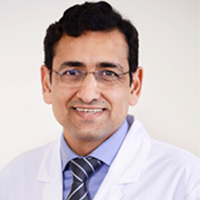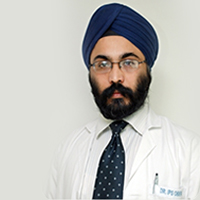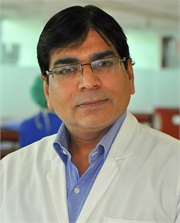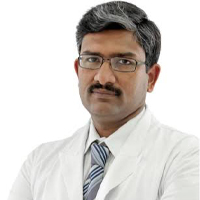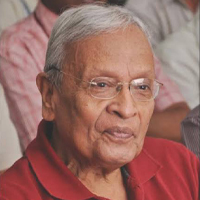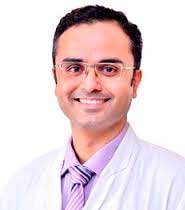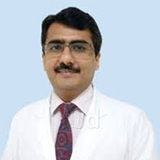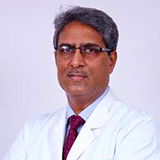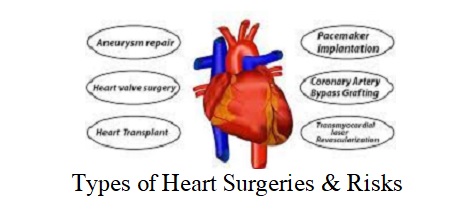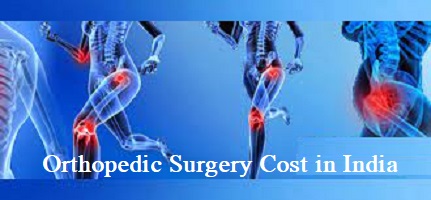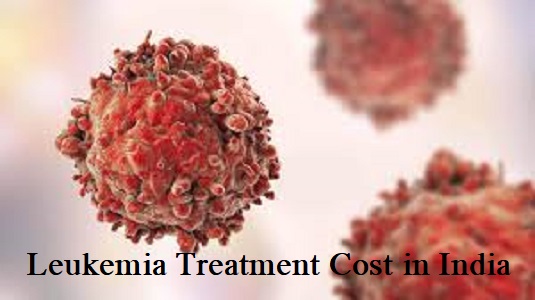Arteriovenous Malformations (AVM): Causes, Symptoms, Treatment, Cost and Recovery
An Arteriovenous Malformation (AVM) is an illness in which blood veins in the brain or spinal cord develop an unusual tangle. Normally, arteries transport oxygen-rich blood away from the heart to the body’s tissues, while veins transport oxygen-depleted blood back to the heart. Capillaries play an important role in joining arteries and veins, allowing oxygen and nutrients to flow. In the case of AVM, however, this capillary network is lacking due to abnormal connections, which can disrupt normal blood flow and cause a number of difficulties.
AVMs may develop anywhere in the body, but brain AVMs are of special concern due to the high risk of bleeding from the abnormal blood arteries, which can cause neurological damage. AVMs affect about 1 in every 100,000 people in the general population. The exact cause of AVMs is not always known, but they might exist from birth or develop later in life.
AVMs can impact individuals of any age, but they are more commonly found in people aged 20-40. The risk of developing symptoms is highest between the ages of 40 and 50. Additionally, AVMs are equally prevalent in both males and females.
Complications of a Brain AVM
Some of the complications of a Brain Arteriovenous Malformation (AVM) are:
- Bleeding in the Brain: Arteriovenous Malformations (AVMs) can cause bleeding in the brain by placing immense pressure on the walls of affected arteries and veins, making them thin and weak. The risk of AVM bleeding typically ranges from 2% to 3% annually, with a higher risk for specific AVM types or if there has been a previous rupture.
- Reduced Oxygen to Brain Tissue: AVMs can reduce the oxygen supply to brain tissue by bypassing the capillary network, hindering the brain tissue’s ability to absorb oxygen, which can lead to brain damage. Inadequate oxygen supply can weaken or even kill brain tissues, leading to symptoms resembling a stroke, such as difficulty in speaking, weakness, numbness, vision loss, or severe unsteadiness.
- Thin or Weak Blood Vessels and Aneurysm Formation: AVMs can cause thin or weak blood vessels, leading to the development of bulges in vessel walls (aneurysms), which are vulnerable to rupture, causing further complications.
- Brain Damage: In response to the fast-flowing AVM, the body may employ more arteries to supply blood, causing some AVMs to grow larger and potentially displace or compress parts of the brain, hindering the free flow of protective fluids around the brain’s hemispheres, leading to brain damage.
- Depleting Tissues of Oxygen and Nutrients: AVMs disrupt the normal flow of oxygen and nutrients to the affected brain tissue due to the lack of capillary bridges between arteries and veins, resulting in the death of tissue and nerve cells in the affected area.
- Language Difficulties, Seizures, and Other Neurological Symptoms: Depending on the location of the AVM, it can cause various neurological symptoms such as language difficulties, seizures, and numbness in parts of the body, persistent headaches, vision changes, and weakness in specific body regions.
- Hydrocephalus: AVMs can lead to the accumulation of cerebrospinal fluid, causing hydrocephalus or “water on the brain,” which can lead to increased intracranial pressure.
- Intracerebral Hemorrhage and Subarachnoid Hemorrhage: AVM ruptures can lead to intracerebral hemorrhage (bleeding into brain tissue) and subarachnoid hemorrhage (bleeding into the space surrounding the brain), both of which can have severe consequences.
Causes of a Brain AMV
Some of the potential causes of brain AVMs are:
- Brain Arteriovenous Malformations (AVMs) are typically present at birth and develop during fetal development.
- Genetic and environmental factors may contribute to congenital AVMs.
- Hereditary Hemorrhagic Telangiectasia (HHT) increases the risk of developing AVMs.
- Head trauma or certain infections have been linked to AVMs in rare cases.
- AVMs disrupt the normal network of blood vessels and lack the usual capillaries.
- The abnormal connection between arteries and veins is a characteristic feature of AVMs.
Symptoms of a Brain AVM
Symptoms of a Brain Arteriovenous Malformation (AVM) can vary based on location in the brain, and whether or not it has ruptured. Some common symptoms associated with brain AVM are:
Symptoms when an AVM has not ruptured (Unruptured AVM):
- Asymptomatic: A significant percentage of persons with AVMs might not experience any symptoms. Up to 15% of people with AVMs have no symptoms and may only learn about their condition through medical imaging.
Symptoms when an AVM has ruptured (Ruptured AVM):
- Hemorrhage: The rupture of the brain AVM can cause brain hemorrhage. Symptoms of hemorrhage include
-
- A sudden and severe headache that may resemble a migraine.
- Confusion and behavioral changes.
- Difficulties with coordination and walking.
- Seizures.
- Ringing in the ears (pulsatile tinnitus).
- Neurological Symptoms: Depending on the size and location of the AVM, it could damage nearby brain tissue and cause several neurological symptoms, including:
- Vision problems.
- Dizziness.
- Muscle weakness or paralysis in specific areas of the body or face.
- Numbness or tingling sensations.
- Difficulty speaking or understanding speech.
- Memory deficits.
- Mental confusion.
- Hallucinations.
- Dementia.
Diagnosis for Brain AVM Treatment in India
Diagnostic procedures used for brain AVM treatment in India are:
- Initial Evaluation: Your doctor will start by discussing your symptoms and conducting a physical checkup. They may also listen for specific sounds known as “bruits,” which indicate rapid blood flow in arteries and veins in the area of an AVM.
- Imaging Tests: Neuroradiologists often perform the following imaging studies to confirm the presence of a brain AVM and determine its characteristics:
-
- Cerebral Angiography: Cerebral Angiography is the most detailed diagnostic test for brain AVM. In this test, a catheter is inserted into an artery in the groin or wrist and guided to the brain using X-ray imaging. A contrast dye is injected to visualize blood vessels and identify feeding arteries and draining veins. The information obtained from this test is crucial for treatment planning.
- CT scan (Computed Tomography): CT scan (Computed Tomography) is another test used for diagnosing brain AVMs. It uses X-rays to create detailed cross-sectional images of the brain, and sometimes a contrast dye may be injected into a vein to enhance the visibility of AVM-related blood vessels (CT angiography).
- MRI (Magnetic Resonance Imaging): MRI (Magnetic Resonance Imaging) is a highly sensitive test that uses strong magnets and radio waves to generate detailed images of the brain. MRI can reveal even subtle changes in brain tissue associated with AVMs and provide information about the AVM’s location and any related bleeding.
- Magnetic Resonance Angiography (MRA): Magnetic Resonance Angiography (MRA) produces detailed images of blood vessels in and around the brain using magnetic fields and radio waves.
- Computed Tomography Angiography (CTA): Computed Tomography Angiography (CTA) creates detailed pictures of blood vessels using X-rays.
- Transcranial Doppler Ultrasound: Transcranial Doppler Ultrasound assesses the speed of blood flow through the brain using sound waves.
- Incidental Discovery: Some AVMs do not cause symptoms, and they are identified incidentally during imaging examinations for other medical problems, traumas, or unexplained symptoms.
Procedure for Brain AVM Treatment in India
When it comes to treating brain AVM in India, there are several factors to consider such as the type, size, and location of the AVM, the risk of rupture, the patient’s age and overall health, as well as the presence of any symptoms. Some of the common treatment procedures for brain AVM in India:
- Medications: Medications can be prescribed to alleviate symptoms caused by AVM, such as seizures and headaches. These medications can help alleviate discomfort and control seizures.
- Surgical Removal (Micro Surgery): Surgical removal or resection is a common treatment option if the AVM has previously bled or is accessible. This procedure involves removing the AVM from the surrounding brain tissue, sealing it off with special clips, and reattaching the skull bone. However, it’s a suitable approach only if there’s a low risk of hemorrhage or seizures.
- Endovascular Embolization: Endovascular embolization is a minimally invasive procedure that involves blocking the artery supplying the AVM by injecting an embolizing agent, such as glue-like substances, micro coils, or small particles. It can be performed alone or as a prelude to other surgical treatments, reducing the size of the AVM or the risk of bleeding.
- Stereotactic Radiosurgery (SRS): Stereotactic Radiosurgery (SRS) is a non-invasive treatment method that uses precisely focused radiation to target arteriovenous malformations (AVMs). This targeted radiation damages the blood vessels within the AVM, leading to scarring and gradual closure over a period of 1 to 3 years. SRS is an excellent option for small AVMs that are difficult to remove using traditional surgical methods and have not caused life-threatening bleeding. It doesn’t involve any surgical incisions, making it a safe and effective treatment option.
- Gamma knife Radiosurgery: This method uses highly focused radiation beams to gradually shrink, scar, and dissolve an AVM over a few years or to make the AVM easier to remove surgically.
- Combination Approaches: Combination approaches may be recommended in some complex cases to provide the most effective and low-risk outcome. However, these approaches are determined only after careful evaluation and discussion with the patient.
Success Rate of Brain AVM Treatment in India
The success rate of Brain AVM treatment in India ranges from 85% to 90%. The primary treatment method for this condition is microsurgery, which has a success rate of approximately 90% for smaller AVMs. This procedure involves using a microscope and specialized instruments to remove the AVMs, ensuring a safe and effective treatment.
Cost of Brain AVM Treatment in India
Arteriovenous malformations (AVMs) are a serious medical condition that requires prompt treatment. India is a highly affordable option for those seeking Brain AVM treatment in India, with an average cost of around USD 12,000, which is significantly less expensive than what many developed nations offer. India’s top-tier hospitals, especially in the major cities, have state-of-the-art equipment and employ highly skilled surgeons. This combination of affordability and quality makes India an attractive destination for those requiring Brain AVM treatment.
Best Hospitals for Brain AVM Treatment in India
When it comes to seeking the best hospitals for Brain AVM treatment in India, you will find numerous renowned hospitals that provide exceptional expertise in the field. These hospitals utilize state-of-the-art technology, have a team of experienced medical professionals, and follow a multidisciplinary approach to treatment. Patients have access to a range of treatment options, including embolization, surgical resection, and Radiosurgery, which are customized to meet their specific requirements. Additionally, many of these top hospitals for Brain AVM treatment in India hold international accreditation, ensuring the highest standards of medical care.
- Max Super Specialty Hospital Saket – New Delhi, India
- Sanar International Hospital – Gurgaon, India
- Indraprastha Apollo Hospitals – New Delhi, India
- Fortis Memorial Research Institute – Gurgaon, India
- Apollo Hospital Chennai – Chennai, India
- Medanta – The Medicity – Gurgaon, India
- Marengo Asia Hospital – Gurgaon, India
- BLK Super Speciality Hospital – New Delhi, India
- Artemis Hospital – Gurgaon, India
Top Doctors for Brain AVM Treatment in India
In India, you can find a plethora of highly skilled and experienced doctors when seeking treatment for Brain AVM from Top Doctors. These specialists are proficient in diagnosing, managing, and treating Arteriovenous Malformations. These Top Doctors for Brain AVM Treatment in India stay up-to-date with the latest advancements in medical technology. Patients can rely on their extensive knowledge and dedication to delivering the best possible treatment for Brain AVM, ensuring optimal outcomes and a high standard of care.
- (Col.) Joy Dev Mukherji – Max Super Specialty Hospital, Saket
- Aditya Gupta – Artemis Hospital
- Rana Patir – Fortis Memorial Research Institute
- V.S. Mehta – Paras Hospital
- Sandeep Vaishya – Fortis Memorial Research Institute
- Sudheer Kumar Tyagi – Max Super Specialty Hospital, Saket
- Arun Saroha – Max Super Specialty Hospital, Saket
- Joy Varghese – Apollo Hospital, Chennai
Contact Form
Attach Medical Report
Top Doctors & Surgeons in India
Why Choose Us

Personalized Care
24x7 Supports
Top NABH and JCI accredited Hospitals
Free Cost Estimation & Medical Opinion from Specialist
Get Free Tele/Video Consultation
Visa and Traveling Assistance
Post-surgery with Assistance in Follow-ups


